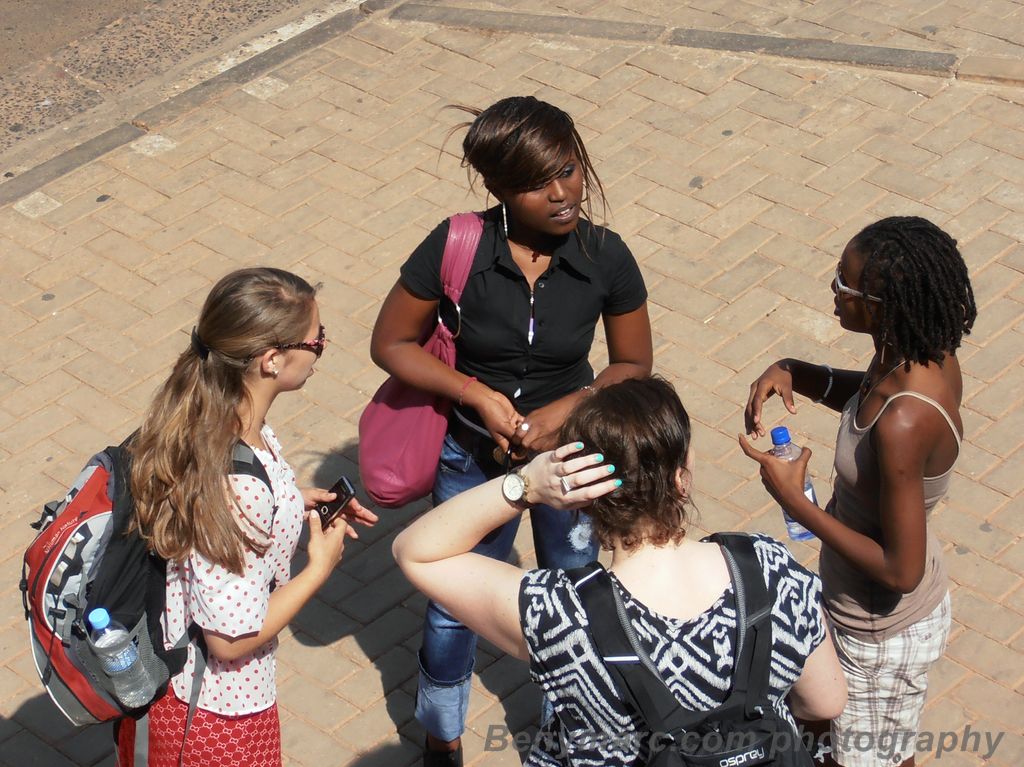Kigali Walking Tour | Discover Rwanda’s Heartbeat on Foot
Set among rolling green hills and bathed in a spirit of renewal, Kigali is one of Africa’s cleanest, safest, and most vibrant capitals — a city that blends modern innovation with deep cultural roots. The best way to experience its charm is not from behind a car window but on foot, through the sights, sounds, and smiles that make Kigali unforgettable.
A Kigali Walking Tour is more than a stroll through city streets; it’s an intimate journey into Rwanda’s story — its resilience, creativity, and rising pride. From bustling markets and historic memorials to art galleries and colorful neighborhoods like Nyamirambo, every step reveals another layer of Kigali’s soul.
Why Take a Walking Tour of Kigali
Walking allows travelers to connect with the city at a human pace — to smell the roasted coffee drifting from cafés, to greet locals with a friendly Muraho! (“Hello”), and to experience the rhythm of daily life up close. Kigali’s hilly landscape, wide sidewalks, and warm hospitality make it a delight for explorers who prefer immersion over speed.
Whether you’re interested in culture, history, food, or art, Kigali’s neighborhoods each tell a unique story that together forms the heart of modern Rwanda.
Top Highlights of a Kigali Walking Tour
1. Kigali City Centre – The Modern Face of Rwanda
Your walking journey often begins in the city centre, where Rwanda’s transformation is most visible. The skyline glitters with modern architecture like the Kigali Convention Centre and Radisson Blu Hotel, symbols of progress and pride. Along KN Avenue and Rwanda Revenue Boulevard, cafés, boutiques, and galleries create a lively urban atmosphere.
Stop at local cafés such as Bourbon Coffee or Question Coffee for a cup of Rwanda’s finest Arabica and watch the world go by. Guides often share stories of Kigali’s growth — from a quiet colonial town to a thriving African capital of innovation and sustainability.
2. Kigali Genocide Memorial
A sobering yet essential stop, the Kigali Genocide Memorial in Gisozi honors the more than one million lives lost during the 1994 Genocide against the Tutsi. Through powerful exhibits, photographs, and survivor stories, the memorial serves as a place of remembrance, reflection, and hope.
Visiting on foot gives you the space to absorb its message — one of reconciliation and unity that defines Rwanda today. Most guided walking tours include time here, handled with care and respect.
3. Nyamirambo Neighborhood – The Cultural Heart of Kigali
No walking tour is complete without exploring Nyamirambo, Kigali’s oldest and most vibrant district. Known for its colorful streets, lively markets, and warm people, Nyamirambo offers a glimpse into the daily rhythm of Rwandan life.
Here, you can:
-
Visit local markets overflowing with fruits, fabrics, and handmade crafts.
-
Join the Nyamirambo Women’s Center walking tour, where local guides lead you through mosques, salons, tailor shops, and family homes.
-
Learn to cook traditional Rwandan dishes, like Isombe or matoke, and share a meal with your hosts.
The neighborhood’s blend of cultures — Muslim, Christian, and secular — creates a unique harmony reflected in its art, music, and street life.
4. Kimironko Market – Kigali’s Colorful Bazaar
For a sensory explosion of sights, sounds, and scents, stop by Kimironko Market, Kigali’s largest and busiest marketplace. Here, hundreds of vendors sell everything from fresh produce and spices to fabric, baskets, and souvenirs.
This is where you’ll see Kigali at its most authentic — locals bargaining cheerfully, tailors sewing bright kitenge prints, and visitors discovering Rwanda’s vibrant craft traditions.
Your guide can help you interact with sellers, learn about Rwandan ingredients, or even buy a colorful fabric and have a local tailor turn it into custom clothing within hours.
5. Inema Arts Centre and Kigali’s Creative Spaces
Kigali has blossomed into a hub of contemporary African art, and walking tours often include visits to creative centers such as:
-
Inema Arts Centre: A collective founded by Rwandan brothers who showcase modern paintings, sculptures, and performances.
-
Niyo Arts Gallery: Where art meets social impact, supporting street children through creative expression.
-
Kacyiru Craft Villages: For locally made jewelry, ceramics, and home décor.
These stops offer a chance to meet artists, learn their stories, and understand how art has become a voice for Rwanda’s new generation.
6. Kandt House Museum of Natural History
Located near downtown Kigali, this museum is housed in the former residence of German explorer Richard Kandt. It’s the oldest surviving colonial building in the city and offers an engaging look at Rwanda’s natural heritage, geology, and the story of Kigali’s origins.
From its terrace, you can enjoy sweeping views of the city’s hills and valleys — a great midpoint rest on your walking route.
7. Local Food Tasting
No Kigali walking tour is complete without sampling local dishes. Stop at small eateries for brochettes (Rwandan skewers), fried plantains, sambaza fish, or Isombe with peanut sauce. Pair your meal with a glass of Urwagwa (banana beer) or fresh Rwandan juice for a true local flavor.
Many guides also include visits to coffee roasteries or tea cafés, where you can taste freshly brewed Rwandan beverages while learning about the country’s famous agricultural exports.
Practical Information for Kigali Walking Tours
-
Best Time to Go: Morning (8–11 a.m.) or late afternoon (4–6 p.m.) for cooler temperatures and softer light.
-
Duration: 2 to 4 hours, depending on your chosen route and interests.
-
What to Bring: Comfortable shoes, a hat, sunscreen, reusable water bottle, and camera.
-
Starting Points: Most tours begin at your hotel, in central Kigali, or at the Nyamirambo Women’s Center.
-
Guides: Local guides are available through community centers, cultural associations, or reputable tour companies.
A Walk Through Rwanda’s Story
Kigali Walking Tours are not just about sightseeing — they’re about connecting. You’ll meet locals who lived through the city’s transformation, hear stories of progress, and witness how Rwanda’s capital has become a model for cleanliness, safety, and social unity in Africa.
Every corner of Kigali whispers resilience — from the laughter of children in Nyamirambo to the quiet reflection at Gisozi, from the aroma of street food to the bold strokes of a painter’s brush.
Walking through Kigali is walking through Rwanda’s living spirit — peaceful, proud, and full of life.





